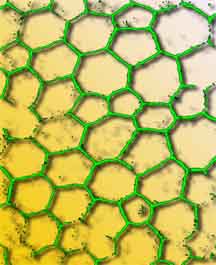


Experimental autoimmune uveoretinitis (EAU) is an animal model of the human disease posterior uveitis, which is a significant cause of blindness in working age adults. Research carried out in our laboratory indicates that following EAU, immunosurveillance of the retina is profoundly altered. One hypothesis to explain this is reorganisation of the tissue to promote an increase in immune cell traffic. This project will investigate the presence of pathognomonic molecular features of lymphoid neogenesis using cDNA prepared from the retinas of mice with uveitis. The main technique to be used will be quantitative-PCR for chemokines associate with lymphoid neogenesis. There may also be opportunity to study sections by immunohistochemistry and complete some FACS analyses of diseased eyes.
Classically activated macrophages produce nitric oxide (NO) to kill microbes but during autoimmune disease,
NO can cause damage to the surrounding tissues. LPS and IFNγ stimulation can both induce NO production by macrophages.
LPS-induced NO is TNF-independent, while IFNγ-induced NO requires autocrine TNF signalling via TNF receptor 1 (TNFR1, p55)1.
IFNγ-induced NO requires expression of IRF-1, a transcription factor.
LPS stimulated macrophages also upregulate their surface expression of CD40, independently of TNF. IFNγ-induced CD40, however,
is TNF-dependent, partially via TNFR1 signalling. Furthermore, CD40 ligation in the presence of TNF can also upregulate NO production (unpublished).
Therefore, the aims of this project are:
1. To confirm the upregulation of CD40 after stimulation with LPS, IFNγ and TNF.
2. To determine if CD40L and/or TNF can induce IRF1 and NOS2.
3. To confirm CD40L and TNF induce NO.
4. To quantify TNF production after CD40L ligation.
RAW 264.7 cells (a murine macrophage cell line) and bone marrow derived macrophages from wild-type and TNFR1-/- mice will be used to carry out these experiments. The techniques used will be tissue culture, FACS, cell biology (NO assays and ELISAs) and molecular biology (qPCR).
Wnt signalling is well studied plays an essential role during embryonic development. More recently, however, a role for wnt signalling during inflammation has come to light. Wnt5a can be induced in macrophages after stimulation with LPS and IFNγ, and it has also been shown to be upregulated during inflammatory disease.
Therefore the aims of this project are:
1. Summarise canonical and non-canonical wnt signalling and explain the regulation of the different pathways.
2. To explain what is known about wnt signalling during various inflammatory diseases, concentrating on autoimmune disease?
3. To explain the wnt signalling pathways involved in macrophages during inflammation.